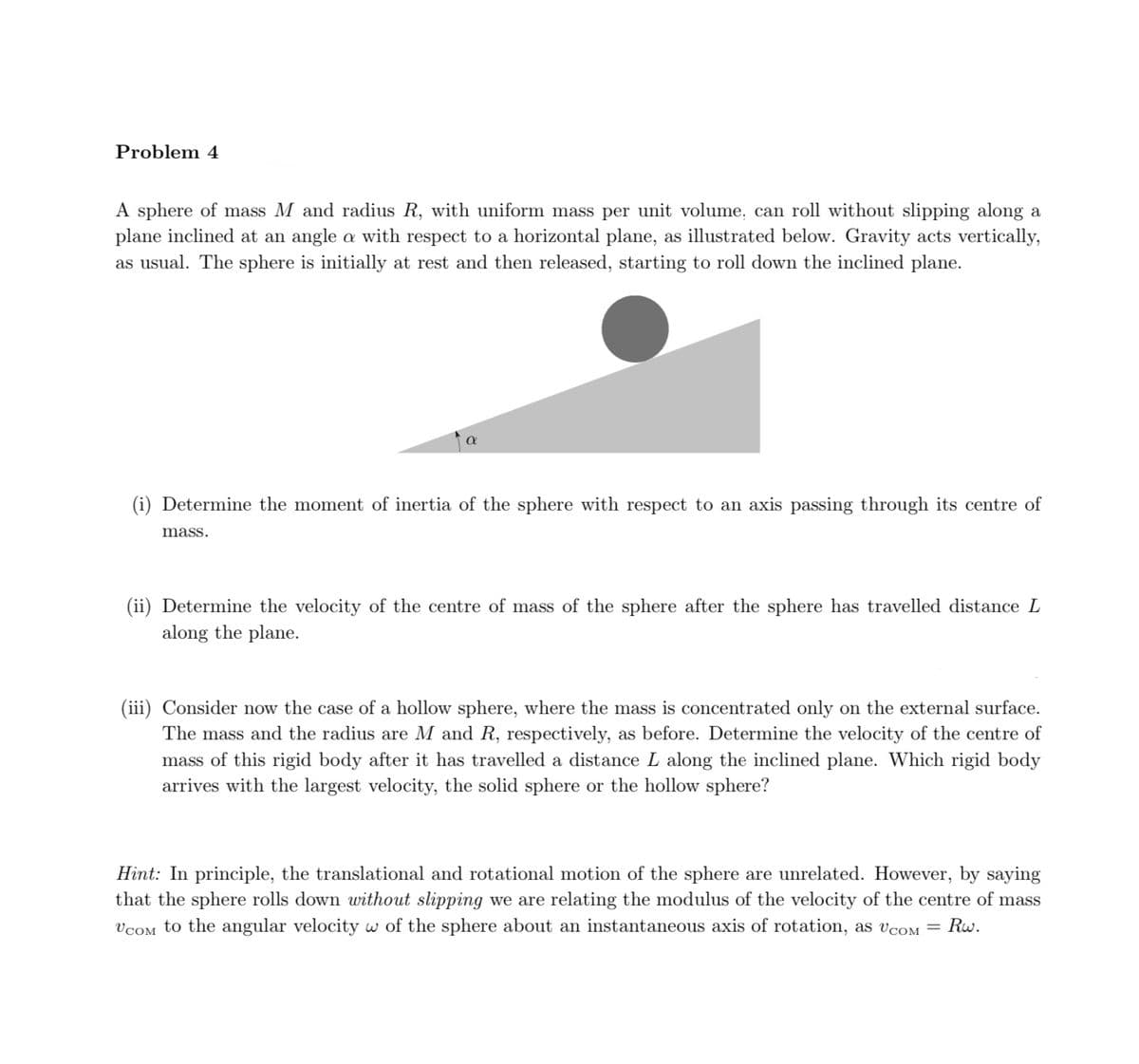A sphere of mass M and radius R, with uniform mass per unit volume, can roll without slipping along a plane inclined at an angle a with respect to a horizontal plane, as illustrated below. Gravity acts vertically, as usual. The sphere is initially at rest and then released, starting to roll down the inclined plane. (i) Determine the moment of inertia of the sphere with respect to an axis passing through its centre of mass.
A sphere of mass M and radius R, with uniform mass per unit volume, can roll without slipping along a plane inclined at an angle a with respect to a horizontal plane, as illustrated below. Gravity acts vertically, as usual. The sphere is initially at rest and then released, starting to roll down the inclined plane. (i) Determine the moment of inertia of the sphere with respect to an axis passing through its centre of mass.
Related questions
Question
Answer part i please as the previous answer to this question confused me as it seems too simple to just state a formula

Transcribed Image Text:Problem 4
A sphere of mass M and radius R, with uniform mass per unit volume, can roll without slipping along a
plane inclined at an angle a with respect to a horizontal plane, as illustrated below. Gravity acts vertically,
as usual. The sphere is initially at rest and then released, starting to roll down the inclined plane.
(i) Determine the moment of inertia of the sphere with respect to an axis passing through its centre of
mass.
(ii) Determine the velocity of the centre of mass of the sphere after the sphere has travelled distance L
along the plane.
(iii) Consider now the case of a hollow sphere, where the mass is concentrated only on the external surface.
The mass and the radius are M and R, respectively, as before. Determine the velocity of the centre of
mass of this rigid body after it has travelled a distance L along the inclined plane. Which rigid body
arrives with the largest velocity, the solid sphere or the hollow sphere?
Hint: In principle, the translational and rotational motion of the sphere are unrelated. However, by saying
that the sphere rolls down without slipping we are relating the modulus of the velocity of the centre of mass
VCOM to the angular velocity w of the sphere about an instantaneous axis of rotation, as VCOM = Rw.
Expert Solution
This question has been solved!
Explore an expertly crafted, step-by-step solution for a thorough understanding of key concepts.
Step by step
Solved in 3 steps with 1 images
